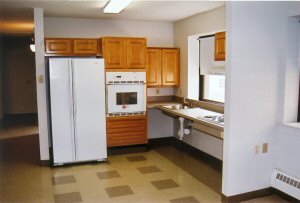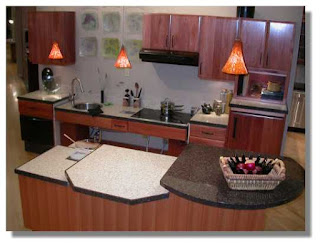I just read an excellent article by Diane Bright OTR/L regarding terminology utilized for universal design, ‘Consumer Speak: Relating Universal Design to the Consumer in Their Terms.’ The article discussed the low demand for universal design, the stigma of disability associated with universal design and the terminology associated with universal design that perpetuates disabled and aged connotations.
Diane made some excellent points. For those of us who support and encourage universal design we need to assist in changing the public’s view of universal design and take the spot light off handicap and on to beautiful and useful.


Universal Design Bathroom vs Handicap Accessible Bathroom
So what is universal design and where did it come from?
Universal design in the United States first came on the scene with the disability and social inclusion movement in the 1950s. There were strong ties between disability advocates, barrier-free design and universal design. This created a historical connection between people with disabilities and universal design.
What is universal design?
Universal design is basically ‘design for all.’ The Center for Universal Design defines universal design as, “the design of products and environments to be able to be used by all people to the greatest extent possible without the need for adaptation or specialized design.’
The strong connection in consumer’s minds between universal design and disabilities has made universal design seem sterile and institutional. For the most part, consumers do not identify with universal design because in doing so they are identifying themselves with disabilities or flaws-negative connotations.
 |
| Handicap Accessible Kitchen |
 |
| Universal Design Kitchen |
 |
| Universal Design Kitchen |
Communicating Universal Design
“What finally decides the form of a dwelling and molds the spaces and their relationship is the vision the people have of the Ideal Life the physical embodiment of an ideal environment.” (Rapoport, 1969. p.4)
To consumers the ideal environment is their home. The intent of universal design is to create a home for all people, which should increase the market value of a home. But in the U.S. universal design features have been so deeply associated with functional loss or limitation consumers just aren’t going there.
Changing the way we communicate universal design features and utilizing more ‘ideal life’ friendly terminology may increase the acceptance of universal design concepts and meanings. Changing our language from an ‘accessible floor plan’ to ‘an open floor plan’ or instead of ‘wheelchair roll-in shower’ we use the word ‘spa shower.’ These changes in terminology can take universal design from ugly to beautiful and elegant.
 |
| Spa Shower |
 |
| Roll-In Shower |
 |
| Snaidero Skyline kitchen |
Consumer friendly language is the first step in changing the connotations around universal design. Professionals connected to building and designing homes must consider changing how they present universal design. Presenting universal design in terms of advocacy/function based design is much less desireable than consumer benefits/life enhancing.
Consumer vs Professional Language (Diane Bright, OTR/L, MSc, ID)
Consumer Based Professional Language
Language
Welcoming Entry With Ramped Wheelchair Access Front Access
Graded Garden Walkway
Master Bath with Spa Shower Wheelchair Roll-In Shower
Accessible Pathway Around Wheelchair Accessible Route for Fire
Entire Home Egress
Custom Kitchen with Flexible Features Wheelchair Accessible Counter and Sink
for Seated and Standing Use with Roll Under Access
Mud Room with Cleanup Area Wash Wheelchair Covered Egress Entry With
Directly off Garage Wheelchair Wash
Open Dining and Living Room Floor Wheelchair Accessible Space
Plan
Atrium Doors to Deck Wheelchair Accessible Doorway
